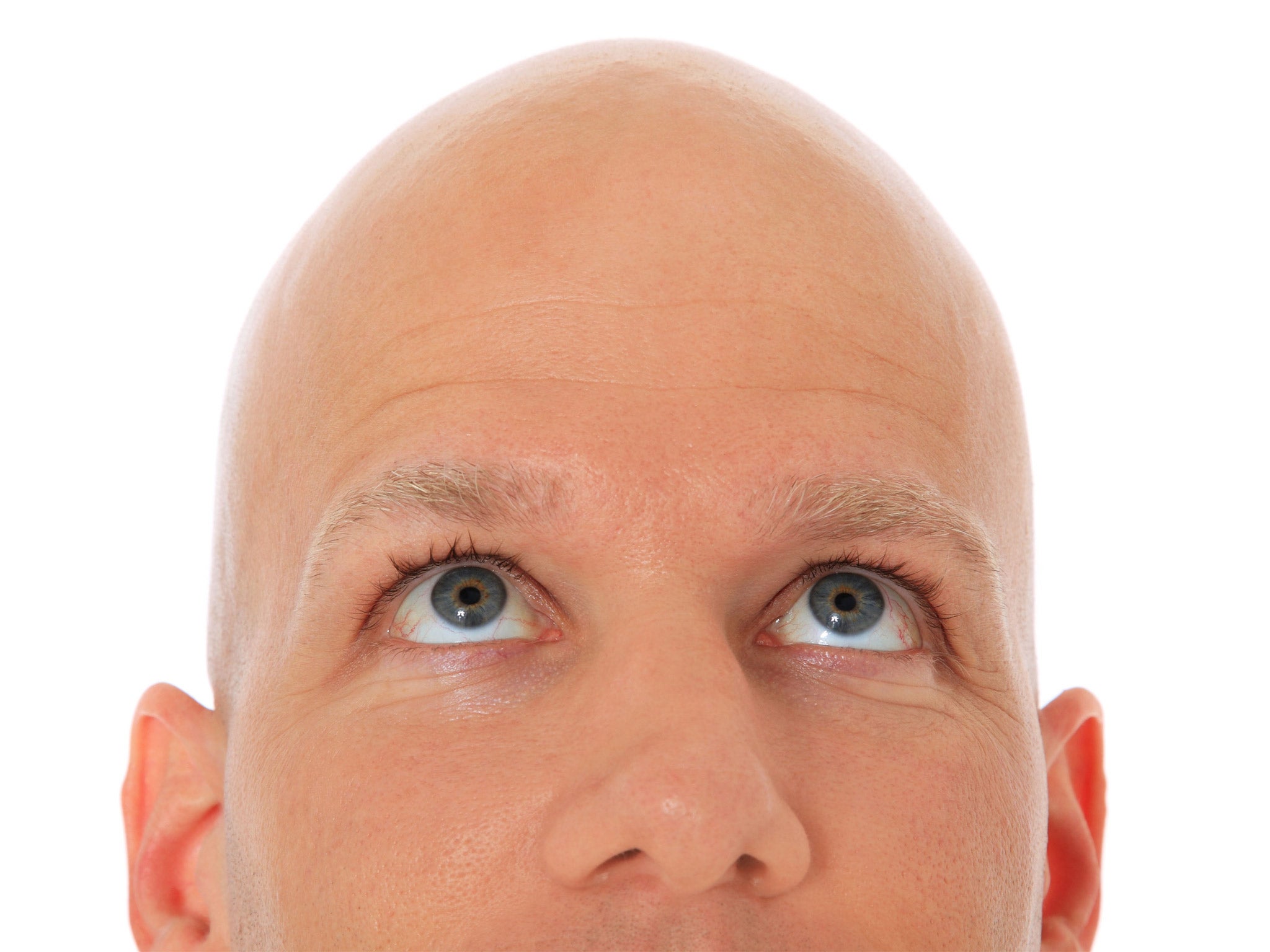The bald facts: hair loss could be the first sign you have heart disease

Losing your hair could be the first visible sign of heart disease – but only if it is from the top of your head.
A review of studies involving almost 40,000 men has found that those with male pattern baldness – losing hair from the crown of their head – had up to a 70 cent increased risk of heart disease. The younger they were when they lost their hair and the greater the extent of their baldness, the higher their risk.
Men with receding hairlines can relax, however, as evidence shows they are not affected – or only slightly.
Baldness progresses with age, affecting 30 to 40 per cent of adult men overall but rising to 80 per cent of men by the age of 80. It runs in families and is associated with the production of the male hormone testosterone.
Baldness has been linked with heart disease in the past but this is the most comprehensive study of the association.
Researchers found 850 studies examining the link published over the last 60 years. However, only six were of high quality and were selected for the review. Four were conducted in the US, one in Denmark and one in Croatia.
Finding a visual cue for heart disease such as hair loss is important because it can serve as an early-warning signal both to individuals to change their lifestyles and to doctors to conduct further tests to prevent the disease developing before it triggers a heart attack.
Three of the studies monitored men for at least 11 years and found those who had lost most of their hair were a third more likely to develop heart disease. Men who went bald before middle age (55-60) had a 44 per cent higher risk. The remaining three studies showed an increased risk of 70 per cent overall, rising to 84 per cent among those who went bald before age 55-60. Men who lost most of their hair had more than twice the increased risk compared with those who lost only some of it.
A spokesperson for the British Heart Foundation (BHF), said bald men should not be alarmed by the findings. "More research is needed to confirm any link. In the meantime, it's more important to pay attention to your waist line than your hair line."
However, the researchers from the University of Tokyo, Japan, said: "Cardiovascular risk factors should be assessed carefully in men with vertex baldness [on the crown of the head] and they probably should be encouraged to improve their cardiovascular risk profile." The findings have been published online in the journal BMJ Open.
The explanation of the link is unclear but the researchers suggest baldness may be a sign of incipient diabetes, chronic inflammation or increased sensitivity to testosterone, all of which increase the risk of heart disease.
The link is borne out by the fact that minoxidil, one of the most popular drugs for baldness, was originally developed as a drug to reduce high blood pressure, which increases the risk of heart disease.
Minoxidil is thought to improve blood flow and the supply of oxygen and nutrients to the hair follicles by dilating tiny blood vessels in the scalp.
Male baldness: The facts
Male pattern baldness, also called androgenetic alopecia, occurs because the hair follicles on the scalp shrink. It can take 25 years to develop or it may happen in five years, and is heavily influenced by heredity. Hair normally grows for three years before falling out, but shrunken hair follicles produce thinner, more fragile hairs which grow for a shorter period. Eventually the hair follicles become dormant. Testosterone is involved in the process, but indirectly – hair follicles convert it into dihydrotestosterone to which they become more sensitive, and which causes them to shrink.
Independent partners: Health insurance premiums from 70p a day. Get a quote or call 01202 544 095
Join our commenting forum
Join thought-provoking conversations, follow other Independent readers and see their replies
Comments